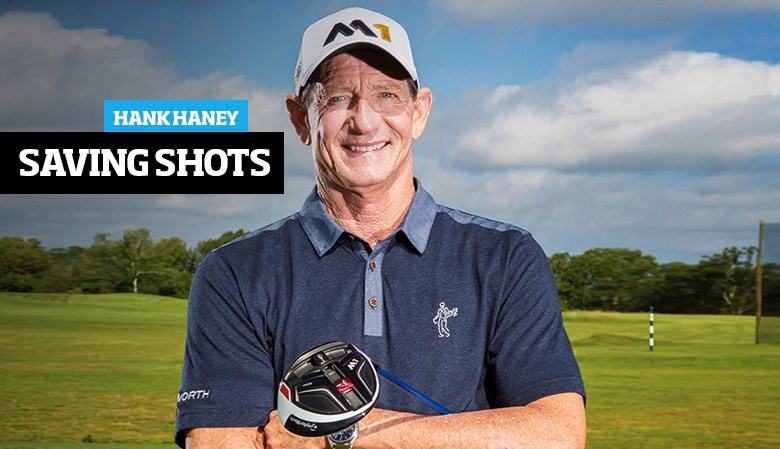Hank Haney gives you 10 tips for saving shots
Last updated:
If you are serious about improving your game then there’s no-one better to advise you than the man who coached Tiger Woods to Major success.
You’ve really got to know your stuff for the world’s best golfers to trust you with improving their games. Hank Haney experienced that trust while guiding both Tiger Woods and Mark O’Meara to Major Championships. His philosophy is to teach his students to become their own teacher, by getting them to understand the flight of the golf ball and how it relates to their golf swing. We got him to spill the beans on how you can best go about improving your game this winter.
Make sure you’ve got properly fitted equipment. Before I start any lesson I make sure the student has clubs that fit them. Shaft length and lie angles are really important if I’m to make sure students can set up in a posture that allows them to swing the golf club properly. Getting fitted for your irons should be top priority especially if you have a tendency to fat or thin them.
Make sure you’ve got the right driver. It’s the most ill-fitted club for golfers. With all the opportunities today, especially with clubs like the new TaylorMade M1, you can adjust your ball flight in so many different ways. Trajectory through the loft and spin can be adjusted in terms of whether you are slicing or hooking it, and how much the ball is spinning can be tuned to you. These are all things that are adjustable. You have an opportunity to get a piece of equipment that will help your game.
With the driver, fix your big miss. Your big miss is what leads to penalty shots. Adjust your way out of that big miss using the technology in the golf club or lessons but make sure you set up in a position that allows you to fix your slice or hook.
Eliminate penalty shots. Sounds really simple, but lots of golfers fall into the trap of making the same mistake time and time again… and those penalty shots are so costly on your card.
Fix your short game. Eliminate two chips and pitches around the green by learning a shot that allows you to get onto the green. Take a strategy to play more conservatively, where you’re not always aiming at the pin. If the pin’s on the side of the green give yourself enough room to put it on the green. Putt whenever you can, play a lower trajectory shot whenever you can and get the ball on the green in one shot.
Eliminate two bunker shots. How many times do you see an amateur take two to get out of a bunker? A lot of shots can be saved if you consistently get shots out of sand the first time and hit the green. Any time you are in close proximity to the green you have to get the ball on the green in one shot.
Get rid of three-putts. You don’t have to make a lot of long distance putts. Outside of 30 feet the best players in the world are making less than five per cent. But you have to eliminate three putts. Your goal should be to get the ball close to the hole. People look at putts all the time and fall in love with the line but they should be thinking about the speed of the putt. Keep thinking about the speed and remember 85 per cent of all putts are missed on the low side of the hole. So play more break than you think. Think more about speed than you think about the line.
Divide your practice time up into three categories. A third full swing, a third short game and a third putting. Divide each category into thirds, too. With the full swing spend a third of your time on the tee shot (driver or 3-wood). A third on approach shots (irons/hybrids) and a third of your time on your wedges. Pay close attention to the 50-125 yard range, it’s the range that can change your scoring potential. On the short game spend a third of your time chipping, a third pitching and a third on sand play. On the putting green dedicate a third to long putts, a third to short putts (practise from where your missable range starts three-feet, four-feet or five-feet) and finally spend a third of that time on makeable putts (10–15 feet range).
Plan for your practice time. Most people don’t have a plan, they are simply exercising. When you go to the range you have to make sure you have a good plan.
In order to make the plan you have to have a good diagnosis of your game. You have to understand your game. Where your big miss is. Where do you lose your shots, how many times you three-putt, how many penalty shots you take etc. People analyse their swing but they don’t really analyse their game. You have to analyse your game to identify the weaknesses and improve them. Put out the biggest fire first and then go from there.

